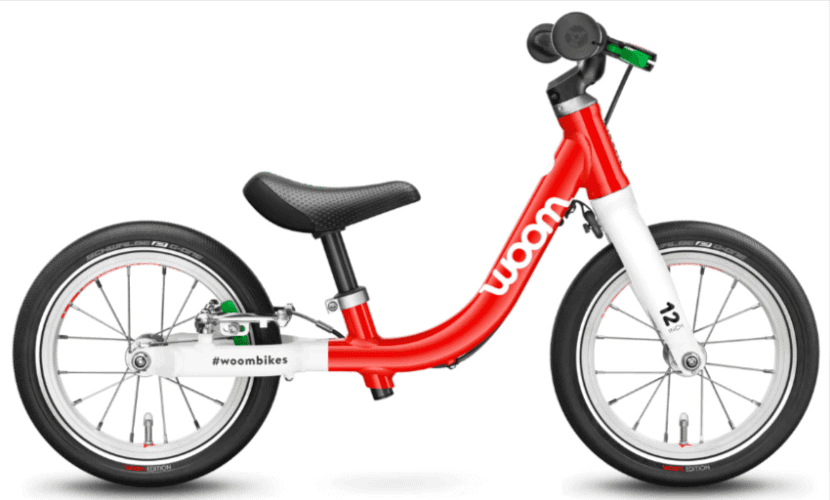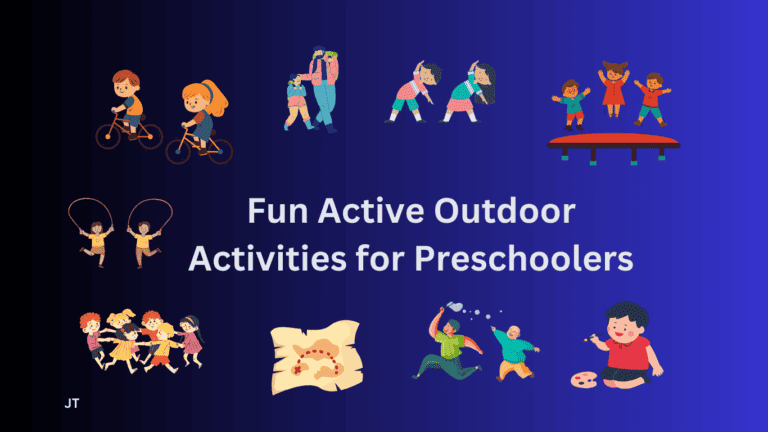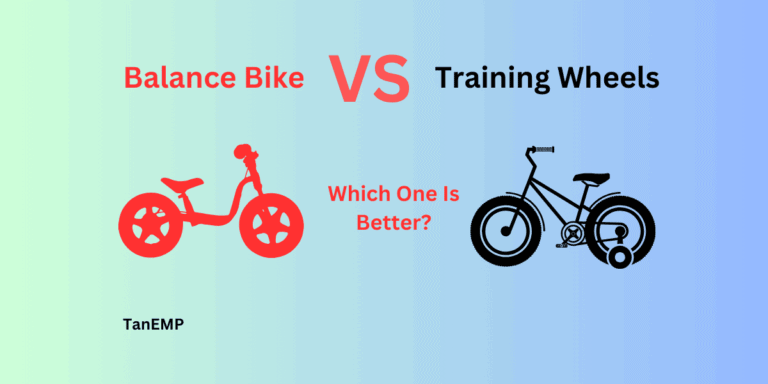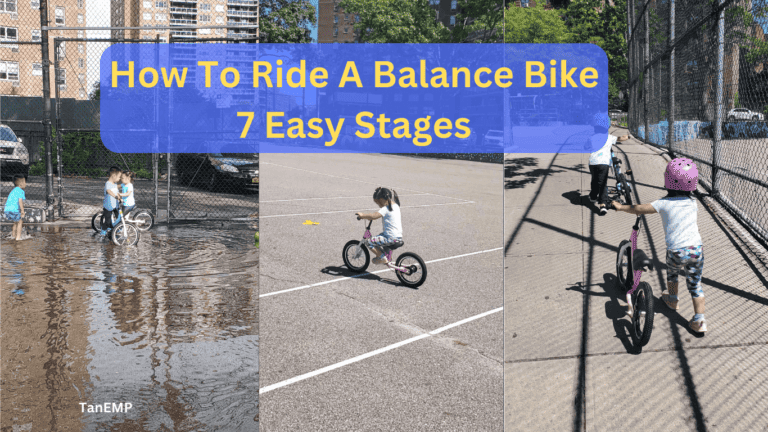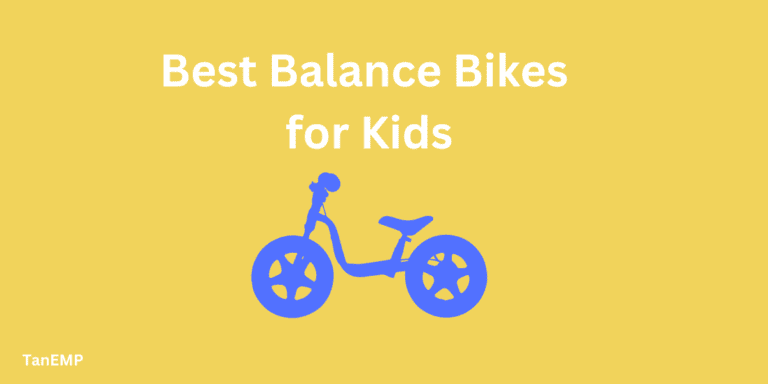Balance Bike Vs Tricycle: How Do You Choose?
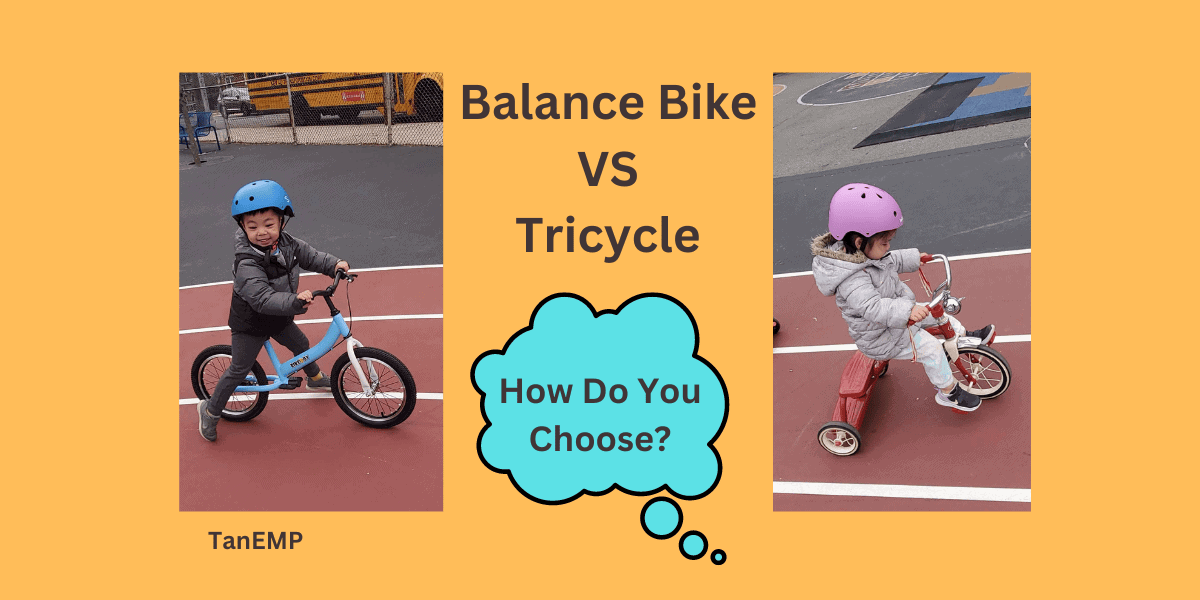
Are you struggling with choosing a balance bike or tricycle for your child?
Some parents might gear toward tricycles because they seem safer for younger kids.
There is not much teaching.
All you need to do is put your kids on the tricycle, as long as their legs are long enough, they can ride a tricycle as young as 18 months.
On the other hand, some parents might want to introduce balance bikes early on how to balance and coordinate.
The learning curve is a lot tougher than a tricycle, but a balance bike is much funnier.
However, I can never get rid of the tricycle in my garage because my kids will fight me over it every time I try to give it away.
They’re riding pedal bikes perfectly after learning how to ride a balance bike, but from time to time, they will take out the tricycle for a spin in the park.
Both of my kids use both tricycles and balance bikes. I have both positive and negative feedback on both choices.
Key Points Difference Between a Balance Bike vs Tricycle
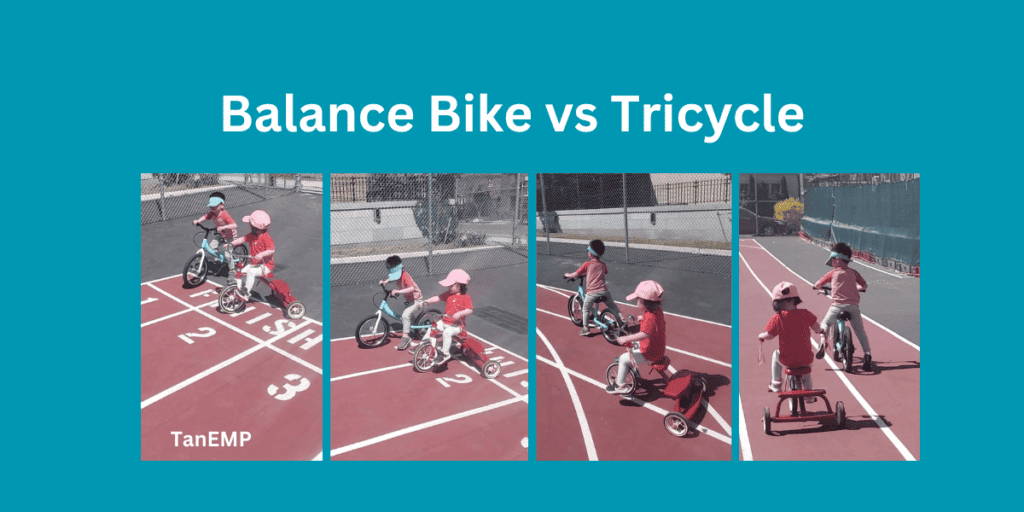
- Balance bikes teach balancing skills vital for riding a real bike
- Tricycles with training wheels are very stable but don’t teach balance
- Balance bikes lead to an easier transition to pedal bicycles
- Tricycles let kids ride immediately with less risk of falling
Follow along as we explore the pros, cons, and differences between these two popular first bikes for children.
Whether you want your child riding safely now or learning skills for life, this guide will help you choose.
What Is The Difference between a Balance Bike and a Tricycle?
The main difference between a balanced bike and a tricycle is that one runs on two wheels while the other runs on four wheels.
Balance Bike
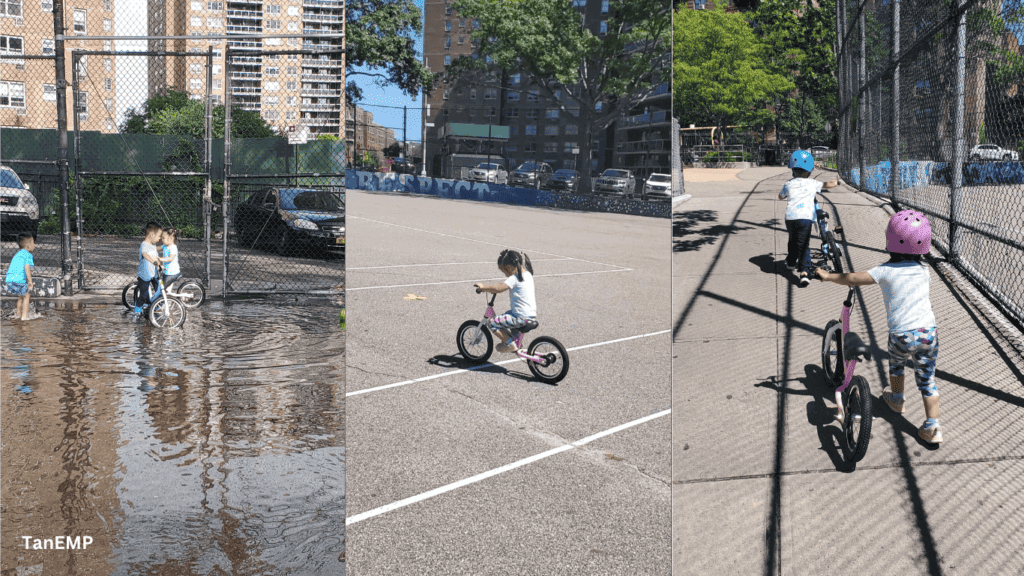
A balance bike, also known as a push bike or running bike, is a two-wheeled bicycle designed for young children.
It lacks pedals and a drivetrain, allowing kids to propel themselves by walking or running while sitting on the bike.
This unique design teaches them the fundamentals of balance and steering, setting the stage for an effortless transition to a regular pedal bike.
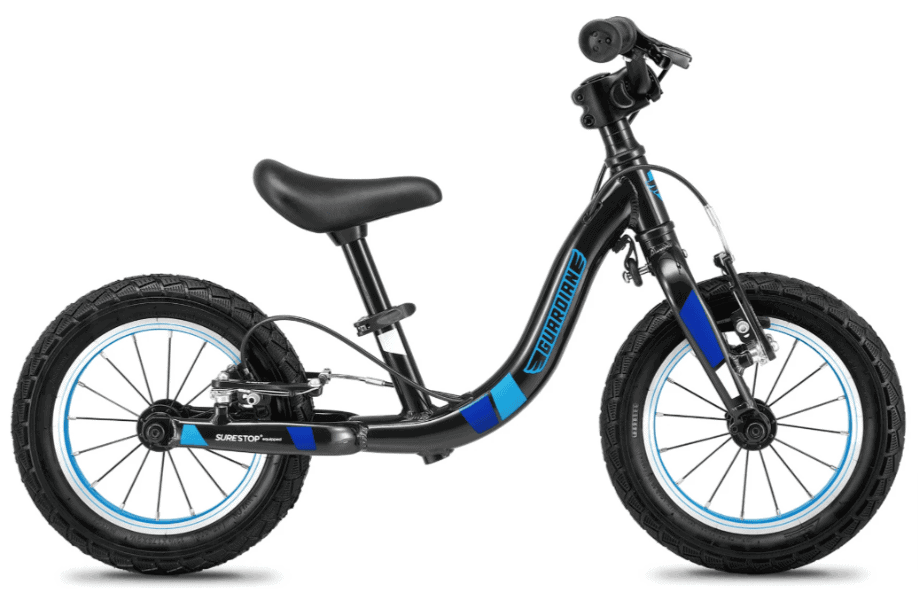
Guardian Highlights
- Best ages for 1.5 to 4
- Weight: 8.5 pounds
- Wheel Size: 12 inches
- Handbrake: yes
- Frame: Lightweight Aluminum
- Features: Steerling Limiter, Air tires, Front & Rear brake
Both my kids started balancing bikes around age 3, and I truly like how to balance bikes and challenge them in every way to prepare them to become independent riders without assistance.
Balance bikes have become the preferred method for children to learn how to ride a bike, replacing the outdated training wheels.
Pros of Balance Bike
Cons of Balance Bike
Tricycles
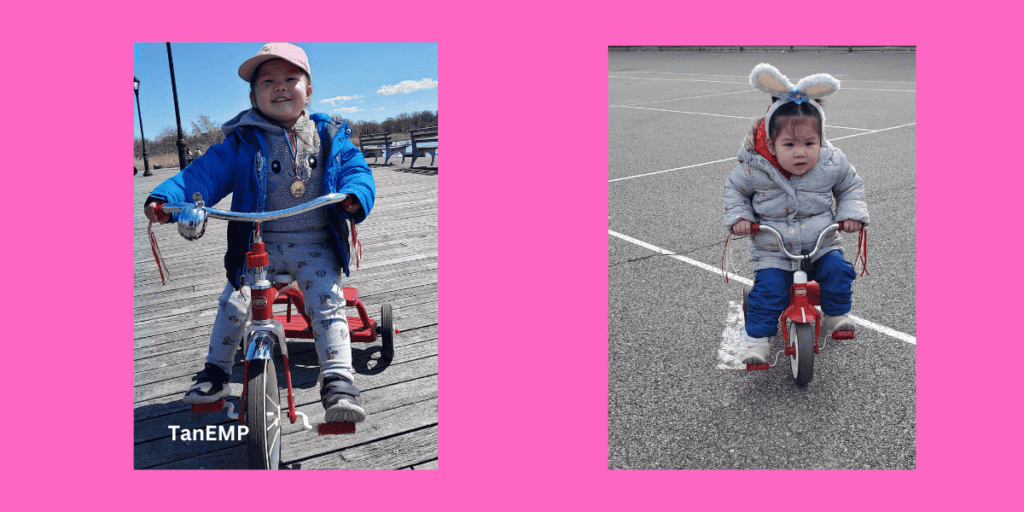
A tricycle, often called a trike, is a three-wheeled bicycle designed for young children. It is different than training wheels where it attach two training wheels on a pedal bike.
Tricycles provide increased stability with their extra wheel, allowing kids at 2 to 3 of age to start riding.
Many tricycles even come equipped with push handles, parent steering, or other beginner-friendly features.
While tricycles get kids on wheels easily, their ultra-stable design means no learning to balance takes place.
There is also no easy transition from a tricycle to a real bike with pedals. Your kids will have to learn how to balance and coordinate to ride a bike.
Although tricycles barely teach kids how to ride a bike, one benefit of tricycles for my daughter is building her leg strength.
Our tricycle is metal, and my son loves to sit in the back while my daughter carrying him. They have so much fun that I still keep the tricycle in our garage.
Tricycles offer a fun first-riding experience if parents don’t prioritize learning to balance just yet.
Pros of Tricycle
Cons of Tricycle
What’s better balance bike or tricycle?
Balance bikes are better than tricycles as they help improve balance, coordination, and motor skills. They are also require less space than tricycles.
7 Reasons Balance Bike Is Better Than Tricycle
1. Balance bikes are lighter and easier to ride – kids can ride balance bikes longer distances than tricycles.
The average weight of a balance bike ranges from 6 to 12 pounds, while tricycles can weigh from 8 pounds to over 24 pounds.
Although balance bikes may appear unsafe for children, they are lightweight and easy to handle within a few days of use.
On the other hand, tricycles are simple to ride but cannot make sharp turns.
My daughter used the Radio Flyer Classic tricycle and tipped over a few times while trying to make a sharp turn.
Balance bikes, unlike tricycles, allow for sharp turns, but there is a risk that the child may fall while learning to balance.
Falling is part of the learning process, and it is common to experience it.
I remember falling into a ditch when I upgraded from training wheels to a bicycle.
Tricycles are inflexible and challenging to maneuver, and their lower setting may cause back pain to the parent while pushing them.
2. Balance Bikes are more fun than tricycles. Kids can attack difficult terrains.
Bike riding is a fun outdoor activity that kids can enjoy every day.
As they get used to balancing bikes, they can even visit the local bike park to increase the challenge and fun.
However, it’s rare to see kids bringing their three-wheelers to the bike park.
3. Teaches Kids to balance and coordinate on two wheels where tricycles will not.
Balance bike is the best way to teach children how to coordinate and balance.
Your child can start riding a balance bike as young as 18 months. If you’re afraid of them falling, start them off indoors. Or use kick scooters to introduce balance and coordination more safely.
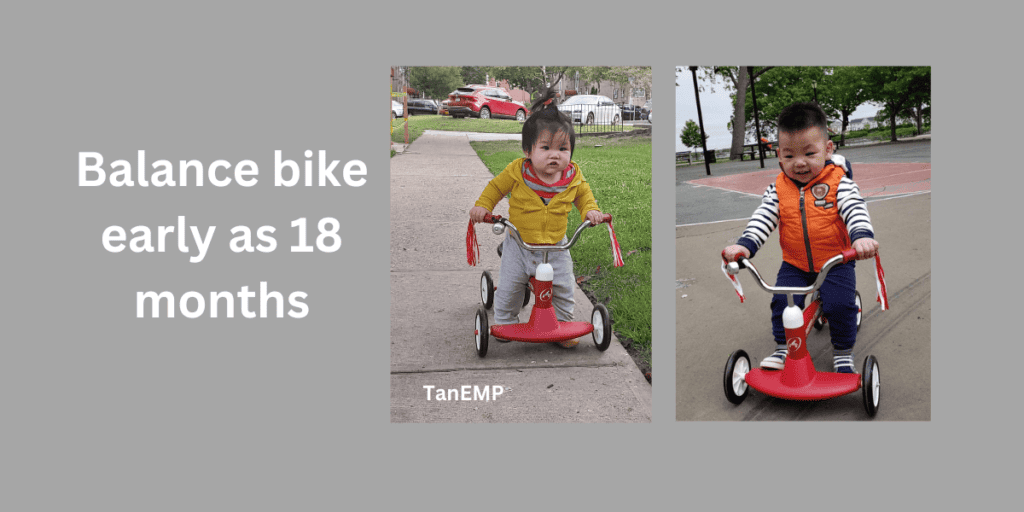
We had a kick scooter, but the kids rarely used the kick scooter function.
4. Improve Confidence in bike riding.
Confidence is crucial when it comes to learning how to ride a bike. Many children give up or delay learning because they lack the confidence to do so.
The learning process becomes much harder if your child starts right away on a pedal bike or tricycle.
The reason that it is harder for your child to build confidence is the constant falling may lower their confidence and self-esteem, making it more likely for them to give up.
While a tricycle may seem too easy and safe, the confidence gained from riding it will be neglected as soon as they step on the pedals.
If you purchase through our partner links, we get paid for the referral at no additional cost to you!
5. Easy to transport in the trunk. Tricycles take up too much space
If you don’t have a park nearby or prefer to take your children to larger parks or trails, it can be challenging to transport a tricycle.
I have a Honda CRV and it’s not easy trying to transport my kids’ bikes without a biking rack.
It can fit perfectly with two balance bikes, but it is difficult to fit both a Radio Flyer tricycle and a bike in it.
However, it has become much easier since my daughter learned how to ride a balance bike.
6. Smoother transition to a regular bike
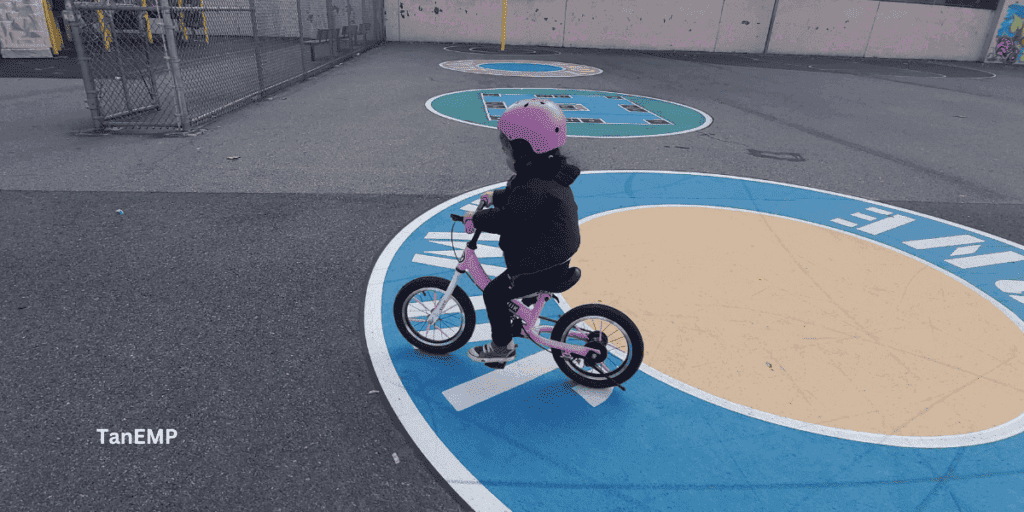
The transition from a balance bike to a pedal bike is much smoother than from a tricycle. Both of my kids had no trouble riding the bike when we added the pedals.
If your child uses a balance bike initially, they will naturally become more independent riding with minimum help.
7. Balance bikes offer longer usage until they’re graduated to pedal bikes.
The usage of balance bikes is longer than tricycles because the age range for balance bikes is 18 months to 6 years old.
My son’s first bike was a 12″ balance bike, and the second bike was a 14″ with the option to add pedals.
He just turned 5 and we plan to
You cannot do that with a tricycle because most tricycles are designed for 3 and under because their legs will outgrow them. However, you can purchase tricycles for older kids if needed.
Wrap Up
By reading up to this point, you should have realized that a balance bike is a better choice when it comes to helping your children learn balance, coordination, and gross motor skills, and ride independently on two wheels.
If you want your children to have a fun time learning how to ride a bike, then purchasing a balance bike would be a wise decision. You won’t regret it!
FAQ
At what age can a child use a tricycle?
By age 2 to 3, your child should develop the balance, coordination, and motor skills to ride a tricycle.
Are balance bikes suitable for all terrains?
A balance bike is a type of bike that is suitable for use on both smooth surfaces and off-road courses.
When choosing a balance bike, it is important to check with the manufacturer to ensure that you select a bike with appropriate tires and features that are suitable for the different surfaces you will be riding on.
Can tricycles help my child learn to pedal faster?
Tricycles are an excellent way to introduce young children to the joys of pedaling. However, transitioning to a pedal bike may require more effort.
A tricycle is like training wheels as it helps children develop basic coordination and balance skills.
However, transitioning to a two-wheeled bike may be challenging at first as children may struggle to maintain their balance.
In contrast, balance bikes help develop your child’s balance from day one.
